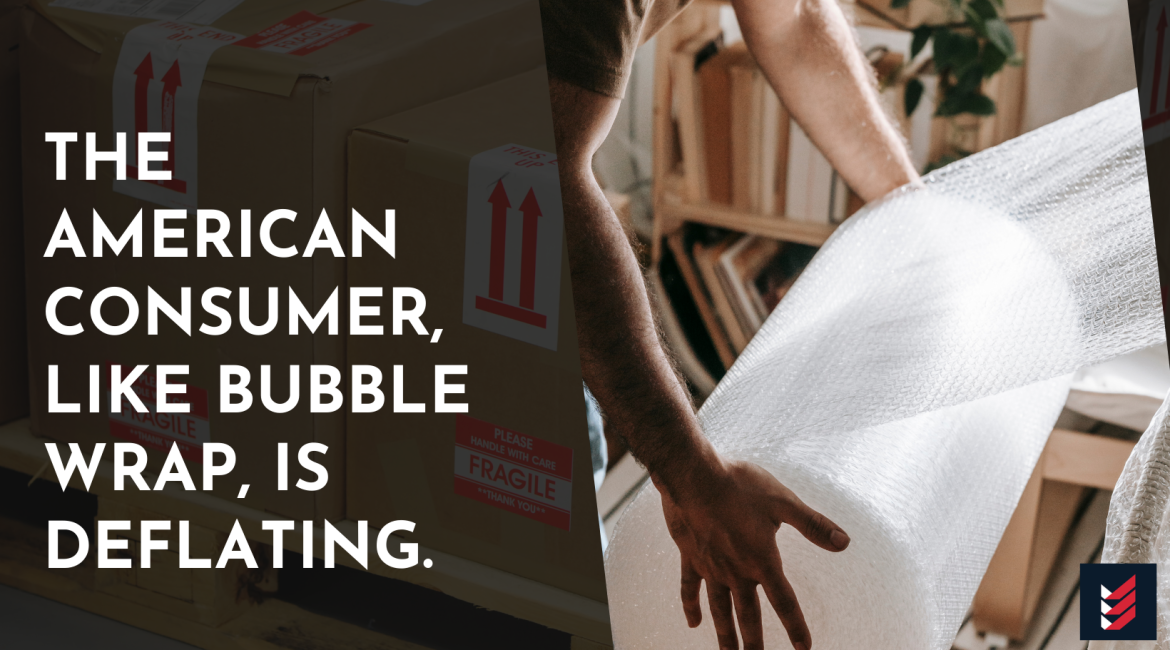The maker of Bubble Wrap saw its stock plummet on Thursday after a dismal earnings report — and the implications go beyond the packaging industry.
Sealed Air, which specializes in packaging supplies for e-commerce, meat, industrial goods, and other industries, predicted a 3% increase in volume in 2022 but instead saw a 6% decrease.
Such drops were especially noticeable in Sealed Air’s “protective” sector, which excludes food. Volumes in protective were down 20% in the fourth quarter of 2022. Food packaging volume fell by 3%.
Meanwhile, the cardboard industry reported that box shipments fell 8.4% in Q4 compared to the final three months of 2021. This is the most severe downturn since the Great Recession.
Trucking was also in a slump at the end of 2022. For the first time since April 2020, the Logistics Managers’ Index contracted in December. That was especially strange given that the fourth quarter is when the trucking industry heats up in preparation for the holiday shopping season.
Inflation and inventory overstocking are to blame.
Sealed Air’s poor earnings are yet another sign from the packaging industry that retail – and the American consumer – are in trouble.
Inflation has forced many people to cut back on their spending. This includes less spending on discretionary e-commerce items as well as grocery items, which Sealed Air specializes in packaging. On Thursday’s earnings call, executives noted that consumers were purchasing less “premium” protein, such as red meat.
Furthermore, executives at Sealed Air stated that “destocking” is preventing increased demand for their products. Retailers accumulated an increasing amount of inventory through 2021 and ’22, but consumers abruptly reduced their spending last spring. This resulted in “inventory bloat” — too much inventory and not enough sales — at big-box retailers like Target and Walmart.
Even now, because of how overstocked some retail inventories have become, there is less demand for packaging products like Bubble Wrap (and Bubble Wrap-lined envelopes). According to the US Department of Commerce, American wholesale inventories fell by the smallest amount in 2.5 years in December.
On the investor call, Sealed Air CEO Ted Doheney stated that decreased consumer spending is evident, “particularly in things like electronics and e-commerce.”
Indicators other than transportation or packaging point to a struggling consumer, despite record-low unemployment. The rising cost of food, fuel, and housing appears to be forcing consumers to charge more and save less.
According to the most recent available data from the Federal Reserve Bank of New York, credit card balances increased at their fastest rate in 20 years between the second and third quarters of 2022. According to The Wall Street Journal, Americans saved only 3% of their monthly income in ’22, down from highs of around 30% in ’20 and even the pre-COVID rate of around 8.8% in ’19.
An increase this summer — or sooner?
Despite this, trucking may be showing early signs of a recovery in the goods economy — or, at the very least, it has reached bottom. According to FreightWaves SONAR truckload data, the market is firming up. And mega-carriers such as Knight-Swift believe the market will recover by the end of the summer.
Doheny of Sealed Air believes the second half of 2023 will be brighter. “The outlook for these markets is that they will remain challenged in the first half of 2023, with a rebound in the second half,” he said.
